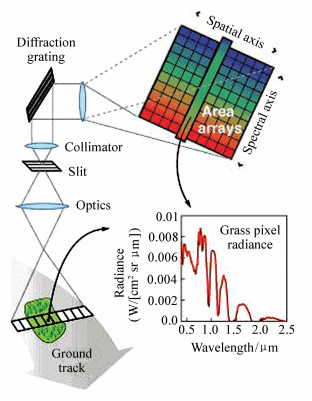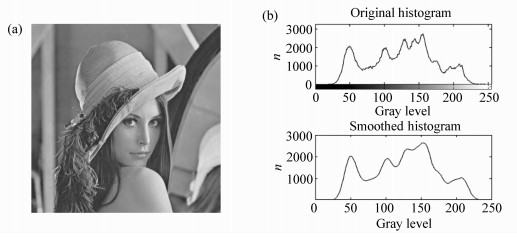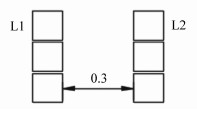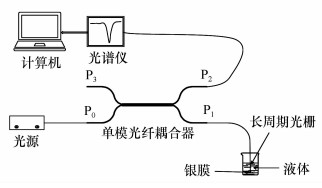2017 Vol. 10, No. 6
2017, 10(6): 699-707.
doi: 10.3788/CO.20171006.0699
Abstract:
In this paper, the adaptive optics technology of bimorph mirror(BM) is introduced, and its application and further development in the field of synchrotron radiation are prospected. Based on the existing published literatures, this paper summarizes the adaptive optics technology of the BM, introduces the working mechanism and key parameters of the technology, and describes its application in internationally representative synchrotron radiation units, and points out the key technical issues involved and future trends. It is found that not only to solve the negative effect of so-called "junction effect" on the technology of BM, but also to produce sub-micrometer and even nanometer sized focal spots, both are the critical issues for the future development of the proposed BM technique. This adaptive optics technique is expected to be used in the phase Ⅱ construction of the advanced third generation synchrotron radiation light source in China, i.e., Shanghai Synchrotron Radiation Facility(SSRF).
In this paper, the adaptive optics technology of bimorph mirror(BM) is introduced, and its application and further development in the field of synchrotron radiation are prospected. Based on the existing published literatures, this paper summarizes the adaptive optics technology of the BM, introduces the working mechanism and key parameters of the technology, and describes its application in internationally representative synchrotron radiation units, and points out the key technical issues involved and future trends. It is found that not only to solve the negative effect of so-called "junction effect" on the technology of BM, but also to produce sub-micrometer and even nanometer sized focal spots, both are the critical issues for the future development of the proposed BM technique. This adaptive optics technique is expected to be used in the phase Ⅱ construction of the advanced third generation synchrotron radiation light source in China, i.e., Shanghai Synchrotron Radiation Facility(SSRF).
2017, 10(6): 708-718.
doi: 10.3788/CO.20171006.0708
Abstract:
In recent years, with the development of spectral imaging technology, airborne imaging spectrometer has been applied in the military target reconnaissance. Firstly, based on the basic principle and characteristics of hyperspectral imager, this paper introduces the application of hyperspectral imager in marine military target detection. Secondly, the application of spectral imaging technology in maritime target detection is analyzed from both the water surface target detection and the underwater target detection. For surface target detection, many key technologies have made breakthroughs, while the current algorithms are still difficult to solve the real-time problems; for underwater target detection, this paper takes the underwater detection as an example to discuss the key technology and feasibility of the underwater target detection based on hyperspectral imager. The analysis shows that the application of spectral imaging technology to military detection is technically feasible and promising. However, the key issues such as the efficiency and accuracy of the algorithm still need to be solved, which is of great significance for the application of spectral imaging in maritime target detection.
In recent years, with the development of spectral imaging technology, airborne imaging spectrometer has been applied in the military target reconnaissance. Firstly, based on the basic principle and characteristics of hyperspectral imager, this paper introduces the application of hyperspectral imager in marine military target detection. Secondly, the application of spectral imaging technology in maritime target detection is analyzed from both the water surface target detection and the underwater target detection. For surface target detection, many key technologies have made breakthroughs, while the current algorithms are still difficult to solve the real-time problems; for underwater target detection, this paper takes the underwater detection as an example to discuss the key technology and feasibility of the underwater target detection based on hyperspectral imager. The analysis shows that the application of spectral imaging technology to military detection is technically feasible and promising. However, the key issues such as the efficiency and accuracy of the algorithm still need to be solved, which is of great significance for the application of spectral imaging in maritime target detection.
2017, 10(6): 719-725.
doi: 10.3788/CO.20171006.0719
Abstract:
To improve the real-time performance and the accuracy of the SURF algorithm, an algorithm combined with AGAST corner detector and improved SURF feature descriptor is proposed. Firstly, feature points are detected by using AGAST corner detection template. Secondly, the Haar wavelet response with increased diagonal information is used to generate descriptor of feature points. Then, the generated descriptor is encoded by the feature bag and a new feature vector is generated. At last, the classification is fulfilled by Support Vector Machine(SVM). Finally, SVM is used to classify the feature vectors to complete the detection. Detection experiments for different view-points, illumination and scales are conducted respectively using SIFT and SURF algorithm as a control. The results show that the average detection rate of this algorithm is 98.0%, 96.9% and 97.1%, and the average time is 66.1 ms, 79.3 ms and 41.0 ms, respectively, which is better than that of SURF algorithm, and the time consumption is about 1/3 of the SURF algorithm.
To improve the real-time performance and the accuracy of the SURF algorithm, an algorithm combined with AGAST corner detector and improved SURF feature descriptor is proposed. Firstly, feature points are detected by using AGAST corner detection template. Secondly, the Haar wavelet response with increased diagonal information is used to generate descriptor of feature points. Then, the generated descriptor is encoded by the feature bag and a new feature vector is generated. At last, the classification is fulfilled by Support Vector Machine(SVM). Finally, SVM is used to classify the feature vectors to complete the detection. Detection experiments for different view-points, illumination and scales are conducted respectively using SIFT and SURF algorithm as a control. The results show that the average detection rate of this algorithm is 98.0%, 96.9% and 97.1%, and the average time is 66.1 ms, 79.3 ms and 41.0 ms, respectively, which is better than that of SURF algorithm, and the time consumption is about 1/3 of the SURF algorithm.
2017, 10(6): 726-736.
doi: 10.3788/CO.20171006.0726
Abstract:
In recent years, many histogram equalization algorithms have been proposed for the consumer electronics field. However, many of these algorithms are hard to realize. Even, for example, some algorithms may cause an effect on brightness saturation. Therefore, a range limited adaptive brightness preserving multi-threshold histogram equalization(RLAMHE) algorithm is presented in this paper. First, the input image is smoothed appropriately to obtain the number of its histogram peak points (N+1). Then the Otsu algorithm is extended by the N-threshold, and N segmentation thresholds of the image are obtained in this way, so that the image is segmented according to this threshold. In order to maximize the brightness of the input image, a range of the equalized image is recalculated according to the minimum Absolute Mean Brightness Error(AMBE) criterion of the input and the output image. Finally, all sub-images are equalized separately using the new equalization range. Test results show that the proposed algorithm is more efficient than other algorithms and can obtain sharper image details. Meanwhile, the overall brightness of the image is also ideal. Using this algorithm to process Lena graphs, the absolute mean luminance error is 0.416 4, which is obviously better than that obtained using RLBHE algorithm(0.629 5).
In recent years, many histogram equalization algorithms have been proposed for the consumer electronics field. However, many of these algorithms are hard to realize. Even, for example, some algorithms may cause an effect on brightness saturation. Therefore, a range limited adaptive brightness preserving multi-threshold histogram equalization(RLAMHE) algorithm is presented in this paper. First, the input image is smoothed appropriately to obtain the number of its histogram peak points (N+1). Then the Otsu algorithm is extended by the N-threshold, and N segmentation thresholds of the image are obtained in this way, so that the image is segmented according to this threshold. In order to maximize the brightness of the input image, a range of the equalized image is recalculated according to the minimum Absolute Mean Brightness Error(AMBE) criterion of the input and the output image. Finally, all sub-images are equalized separately using the new equalization range. Test results show that the proposed algorithm is more efficient than other algorithms and can obtain sharper image details. Meanwhile, the overall brightness of the image is also ideal. Using this algorithm to process Lena graphs, the absolute mean luminance error is 0.416 4, which is obviously better than that obtained using RLBHE algorithm(0.629 5).
2017, 10(6): 737-743.
doi: 10.3788/CO.20171006.0737
Abstract:
Due to the slow execution speed of Canny algorithm in PC, the practicality of this algorithm is greatly restricted. Based on the previous studies, we further optimizes and improves the algorithm. First of all, we use the digital image processing technology to improve the original algorithm under the development environment of VS2012, and then accelerate the Canny algorithm by taking advantage of the large number of GPU stream processors and powerful multithreaded concurrent execution capability. Experiments were made on the improved algorithm and the original Canny algorithm. Experimental results show that in the 4 096×4 096 pixel-size images, the GPU migration algorithm presented in this paper can reduce the execution speed from 80 ms to less than 6 ms. Through this improvement, it can greatly improve the practicability of the algorithm without affecting the edge detection effect.
Due to the slow execution speed of Canny algorithm in PC, the practicality of this algorithm is greatly restricted. Based on the previous studies, we further optimizes and improves the algorithm. First of all, we use the digital image processing technology to improve the original algorithm under the development environment of VS2012, and then accelerate the Canny algorithm by taking advantage of the large number of GPU stream processors and powerful multithreaded concurrent execution capability. Experiments were made on the improved algorithm and the original Canny algorithm. Experimental results show that in the 4 096×4 096 pixel-size images, the GPU migration algorithm presented in this paper can reduce the execution speed from 80 ms to less than 6 ms. Through this improvement, it can greatly improve the practicability of the algorithm without affecting the edge detection effect.
2017, 10(6): 744-751.
doi: 10.3788/CO.20171006.0744
Abstract:
As the chip center distance becomes smaller and smaller, some adjacent bands are usually integrated and prepared on a single chip in multi-chip and multi-band applications of the same component. Therefore, the crosstalk between the chips and the reflection of the chip metal film area will have some impact on the spectral characteristics. In order to reduce the influence of band crosstalk, this paper studies the low-temperature quantificational spectrum control of integrated dual-band chip package. By preparing integrated dual-band chip package, two-band beam isolation is achieved through physical isolation between wavebands and physical cover of the metal areas. The test results show that the spectral crosstalk between chips has been significantly improved after isolation. The crosstalk between bands has been reduced from 8% to 4%, and the out-of-band response has been reduced from 6.5% to 0.78%. In order to avoid the problem of thermal mismatch between the physical isolation strip and the chip under the condition of low temperature, the isolation strip adopts the material which is completely consistent with that of the chip substrate. High-low temperature impact test of dual-band chip package shows that the thermal mismatch of the key components in the package can be solved while effectively suppressing the crosstalk in the package.
As the chip center distance becomes smaller and smaller, some adjacent bands are usually integrated and prepared on a single chip in multi-chip and multi-band applications of the same component. Therefore, the crosstalk between the chips and the reflection of the chip metal film area will have some impact on the spectral characteristics. In order to reduce the influence of band crosstalk, this paper studies the low-temperature quantificational spectrum control of integrated dual-band chip package. By preparing integrated dual-band chip package, two-band beam isolation is achieved through physical isolation between wavebands and physical cover of the metal areas. The test results show that the spectral crosstalk between chips has been significantly improved after isolation. The crosstalk between bands has been reduced from 8% to 4%, and the out-of-band response has been reduced from 6.5% to 0.78%. In order to avoid the problem of thermal mismatch between the physical isolation strip and the chip under the condition of low temperature, the isolation strip adopts the material which is completely consistent with that of the chip substrate. High-low temperature impact test of dual-band chip package shows that the thermal mismatch of the key components in the package can be solved while effectively suppressing the crosstalk in the package.
2017, 10(6): 752-759.
doi: 10.3788/CO.20171006.0752
Abstract:
Ethanol gasoline is a new type of clean fuel, and the content of fuel ethanol in ethanol gasoline affects the performance of the engine. In order to ensure the reliability of engine operation, the ethanol content of ethanol gasoline should be detected quickly and accurately. This paper uses mid-infrared spectroscopy to quantitatively analyze the collected spectral data of ethanol gasoline. First, the original spectral data were preprocessed using multiple scattering correction(MSC), baseline correction, first derivative, second derivative and other pretreatment methods. Then, the predictive model of ethanol content in ethanol gasoline is established using ELM, LSSVM and PLS. By comparing the predictive ability of the three modeling methods, it is found that the accuracy of PLS method is higher than the other two methods. The model determination factor R2 is 0.958, RMSEP is 1.479%(V/V, volume ratio). The mid-infrared spectroscopy provides a new idea for the rapid and accurate detection of ethanol content of in ethanol gasoline.
Ethanol gasoline is a new type of clean fuel, and the content of fuel ethanol in ethanol gasoline affects the performance of the engine. In order to ensure the reliability of engine operation, the ethanol content of ethanol gasoline should be detected quickly and accurately. This paper uses mid-infrared spectroscopy to quantitatively analyze the collected spectral data of ethanol gasoline. First, the original spectral data were preprocessed using multiple scattering correction(MSC), baseline correction, first derivative, second derivative and other pretreatment methods. Then, the predictive model of ethanol content in ethanol gasoline is established using ELM, LSSVM and PLS. By comparing the predictive ability of the three modeling methods, it is found that the accuracy of PLS method is higher than the other two methods. The model determination factor R2 is 0.958, RMSEP is 1.479%(V/V, volume ratio). The mid-infrared spectroscopy provides a new idea for the rapid and accurate detection of ethanol content of in ethanol gasoline.
2017, 10(6): 760-767.
doi: 10.3788/CO.20171006.0760
Abstract:
Eu-doped nano-TiO2 photocatalyst emulsion has been prepared by a novel complexation-controlled hydrolysis method at room temperature using TiCl4, organic carboxylic acid, NH3·H2O, europium nitrate and D-sorbitol etc. as experimental raw materials. The acid red 3R dye was taken as the degradation product, and the photocatalytic performance of TiO2 photocatalyst emulsion prepared under different irradiation effects through the irradiation of solar simulator was investigated. In addition, the photocatalytic performance of Eu-doped nano-titanium dioxide photocatalyst emulsion for different concentrations of dyes was studied. The photocatalytic activity of Eu-doped nano-titanium dioxide photocatalyst was studied by the degradation experiment of acid red 3R dye. The phase structure, particle size, and absorption spectrum of samples were characterized by X-ray diffraction(XRD), nano-laser particle size analyzer and UV-visible spectrophotometer(UV-Vis), respectively. The results show that the average particle size of the sample is about 4.1 nm, the crystal form is anatase, and the absorption spectrum of the sample can be widened to the visible region. The best photocatalytic activity of prepared Eu-doped nano-TiO2 photocatalyst emulsion is shown when the doping content of Eu is 0.3%, pH value is 6 and the reflux time is 15 min. After being irradiated by sunlight for 1 h, the photocatalyst emulsion has the highest degradation efficiency of over 97% for acid red 3R model reactant with a concentration of 25 mg/L.
Eu-doped nano-TiO2 photocatalyst emulsion has been prepared by a novel complexation-controlled hydrolysis method at room temperature using TiCl4, organic carboxylic acid, NH3·H2O, europium nitrate and D-sorbitol etc. as experimental raw materials. The acid red 3R dye was taken as the degradation product, and the photocatalytic performance of TiO2 photocatalyst emulsion prepared under different irradiation effects through the irradiation of solar simulator was investigated. In addition, the photocatalytic performance of Eu-doped nano-titanium dioxide photocatalyst emulsion for different concentrations of dyes was studied. The photocatalytic activity of Eu-doped nano-titanium dioxide photocatalyst was studied by the degradation experiment of acid red 3R dye. The phase structure, particle size, and absorption spectrum of samples were characterized by X-ray diffraction(XRD), nano-laser particle size analyzer and UV-visible spectrophotometer(UV-Vis), respectively. The results show that the average particle size of the sample is about 4.1 nm, the crystal form is anatase, and the absorption spectrum of the sample can be widened to the visible region. The best photocatalytic activity of prepared Eu-doped nano-TiO2 photocatalyst emulsion is shown when the doping content of Eu is 0.3%, pH value is 6 and the reflux time is 15 min. After being irradiated by sunlight for 1 h, the photocatalyst emulsion has the highest degradation efficiency of over 97% for acid red 3R model reactant with a concentration of 25 mg/L.
2017, 10(6): 768-776.
doi: 10.3788/CO.20171006.0768
Abstract:
In order to research the influence of Gaussian vortex beam transmission on atmospheric turbulence, the radial average power and normalized average power distribution of the Gaussian vortex orbital angular momentum(OAM) states after atmospheric turbulence as well as the intrinsic mode index, initial beam radius and turbulence intensity were theoretically analyzed. The validity of pure phase perturbation approximation was used to numerically simulate the variation of radial average power distribution of OAM mode during the transmission of Gaussian vortex beam. The transmission model was established and the atmospheric laser field transmission experiments were conducted. The simulated and measured OAM normalized average power distributions were compared. The results show that under the condition of weak turbulence, the radial average power of OAM mode changes with the increase of receiver aperture size, and tends to be stable. For the common receiver aperture, the interference with OAM mode is very serious under strong turbulence or small initial beam radius. The reliability of numerical simulation of the mode change of OAM in turbulent media is verified. The paper also verifies the reliability of numerical simulation of the mode change of OAM in turbulent media.
In order to research the influence of Gaussian vortex beam transmission on atmospheric turbulence, the radial average power and normalized average power distribution of the Gaussian vortex orbital angular momentum(OAM) states after atmospheric turbulence as well as the intrinsic mode index, initial beam radius and turbulence intensity were theoretically analyzed. The validity of pure phase perturbation approximation was used to numerically simulate the variation of radial average power distribution of OAM mode during the transmission of Gaussian vortex beam. The transmission model was established and the atmospheric laser field transmission experiments were conducted. The simulated and measured OAM normalized average power distributions were compared. The results show that under the condition of weak turbulence, the radial average power of OAM mode changes with the increase of receiver aperture size, and tends to be stable. For the common receiver aperture, the interference with OAM mode is very serious under strong turbulence or small initial beam radius. The reliability of numerical simulation of the mode change of OAM in turbulent media is verified. The paper also verifies the reliability of numerical simulation of the mode change of OAM in turbulent media.
The operational principle analysis of new airborne Electro-Optical Targeting System(EOTS) of US army
2017, 10(6): 777-782.
doi: 10.3788/CO.20171006.0777
Abstract:
The Electro-Optical Targeting System(EOTS) integrates forward-looking infrared(FLIR) and infrared search and track(IRST) to obtain high-resolution images for automatic tracking, infrared search tracking, laser target designating, laser ranging, and laser spot tracking. In this paper, we analyze and study the operating principle of EOTS developed in the United States. Firstly, we summarize the concept and the technical characteristics of EOTS, and present its advanced nature as a new generation of airborne EOTS. Secondly, the EOTS multi-function system, optical components, IR search, maintenance and development planning are introduced. The operational principle and steps of the automatic bore sight calibration system of EOTS are analyzed emphatically. Finally, the performance of EOTS system is summarized.
The Electro-Optical Targeting System(EOTS) integrates forward-looking infrared(FLIR) and infrared search and track(IRST) to obtain high-resolution images for automatic tracking, infrared search tracking, laser target designating, laser ranging, and laser spot tracking. In this paper, we analyze and study the operating principle of EOTS developed in the United States. Firstly, we summarize the concept and the technical characteristics of EOTS, and present its advanced nature as a new generation of airborne EOTS. Secondly, the EOTS multi-function system, optical components, IR search, maintenance and development planning are introduced. The operational principle and steps of the automatic bore sight calibration system of EOTS are analyzed emphatically. Finally, the performance of EOTS system is summarized.
2017, 10(6): 783-789.
doi: 10.3788/CO.20171006.0783
Abstract:
In this paper, a type of refractive index sensor based on a single end face long period fiber grating(LPFG) with transmission spectra is designed. First, an optical fiber joint at the input end of a 2×2 single-mode fiber coupler is connected with the light source, and the two optical fiber joints at the output end are connected with an optical spectrum analyzer and an optical fiber joint of LPFG respectively. Then, the reflective silver film is sputtered on the other end face of the optical fiber containing LPFG. Finally, a series of glycerol aqueous solutions with different refractive indices are used as the liquid medium to be measured to investigate the similarities and differences between the response spectra of LPFG in direct transmission mode and the single-end silver film mode. The experimental results show that although the single end face is adopted, the corresponding response spectra of LPFG is still in the form of transmission spectra. Moreover, for the same liquid, LPFG with the single end face silver film and LPFG in the direct transmission mode have nearly the same resonance wavelength value. However, there is a certain difference between their optical losses. In the 0~80% glycerol solutions, the optical loss in direct transmission mode changes from -12.92 dB to -16.28 dB and then gradually to -13.22 dB. However, the optical loss gradually changes from -13.13 dB to -13.74 dB and then to -11.45 dB in the case of the single end face silver film mode. Compared with the direct transmission mode, there is a better linear relationship between the relative optical loss and the glycerol concentration of LPFG based on a single end face silver film. The LPFG measurement system designed in this study uses a single end face probe to detect the environmental medium, making it more flexible and convenient in measurement. It is well suited for refractive index measurement in long-distance, harsh environments or deep liquid environments.
In this paper, a type of refractive index sensor based on a single end face long period fiber grating(LPFG) with transmission spectra is designed. First, an optical fiber joint at the input end of a 2×2 single-mode fiber coupler is connected with the light source, and the two optical fiber joints at the output end are connected with an optical spectrum analyzer and an optical fiber joint of LPFG respectively. Then, the reflective silver film is sputtered on the other end face of the optical fiber containing LPFG. Finally, a series of glycerol aqueous solutions with different refractive indices are used as the liquid medium to be measured to investigate the similarities and differences between the response spectra of LPFG in direct transmission mode and the single-end silver film mode. The experimental results show that although the single end face is adopted, the corresponding response spectra of LPFG is still in the form of transmission spectra. Moreover, for the same liquid, LPFG with the single end face silver film and LPFG in the direct transmission mode have nearly the same resonance wavelength value. However, there is a certain difference between their optical losses. In the 0~80% glycerol solutions, the optical loss in direct transmission mode changes from -12.92 dB to -16.28 dB and then gradually to -13.22 dB. However, the optical loss gradually changes from -13.13 dB to -13.74 dB and then to -11.45 dB in the case of the single end face silver film mode. Compared with the direct transmission mode, there is a better linear relationship between the relative optical loss and the glycerol concentration of LPFG based on a single end face silver film. The LPFG measurement system designed in this study uses a single end face probe to detect the environmental medium, making it more flexible and convenient in measurement. It is well suited for refractive index measurement in long-distance, harsh environments or deep liquid environments.
2017, 10(6): 790-797.
doi: 10.3788/CO.20171006.0790
Abstract:
An adjustment mechanism with slit diaphragm flexures is designed to keep the optical elements with higher guide precision while maintaining higher accuracy of adjustment. The stiffness of the slit diaphragm flexures structure is analyzed using the elastic mechanics stress function method. The ratio of the radial stiffness to the axial rigidity is taken as the objective function to optimize the dimension parameters of the slit diaphragm flexures structure. Under the condition of not exceeding the yield stress of the flexible structure material, the optimal value of the stiffness ratio reaches 1 573.6. A larger stiffness ratio can reduce the coupling displacement of the adjustment mechanism, so as to improve the guide accuracy of the mechanism. This mechanism is easily fabricated and assembled, and allows adjustment of three degree of freedom (θx-θy-Z). The stiffness of the slit diaphragm flexure is simulated and analyzed. The results show that the ratio of radial stiffness to axial stiffness is 1 660.4, and the error between analytical value and simulation value is 5.23%, which proves the validity of the stiffness analysis method. The optimized structure has an axial adjustment stroke of 2.09 mm, an adjustment stroke of ±16.6 mrad about the x-axis deflection angle and a ±14.4 mrad deflection angle about the y-axis, which satisfies the large stroke adjustment requirement of the optical element.
An adjustment mechanism with slit diaphragm flexures is designed to keep the optical elements with higher guide precision while maintaining higher accuracy of adjustment. The stiffness of the slit diaphragm flexures structure is analyzed using the elastic mechanics stress function method. The ratio of the radial stiffness to the axial rigidity is taken as the objective function to optimize the dimension parameters of the slit diaphragm flexures structure. Under the condition of not exceeding the yield stress of the flexible structure material, the optimal value of the stiffness ratio reaches 1 573.6. A larger stiffness ratio can reduce the coupling displacement of the adjustment mechanism, so as to improve the guide accuracy of the mechanism. This mechanism is easily fabricated and assembled, and allows adjustment of three degree of freedom (θx-θy-Z). The stiffness of the slit diaphragm flexure is simulated and analyzed. The results show that the ratio of radial stiffness to axial stiffness is 1 660.4, and the error between analytical value and simulation value is 5.23%, which proves the validity of the stiffness analysis method. The optimized structure has an axial adjustment stroke of 2.09 mm, an adjustment stroke of ±16.6 mrad about the x-axis deflection angle and a ±14.4 mrad deflection angle about the y-axis, which satisfies the large stroke adjustment requirement of the optical element.


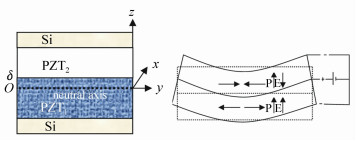
 Abstract
Abstract FullText HTML
FullText HTML PDF 1836KB
PDF 1836KB